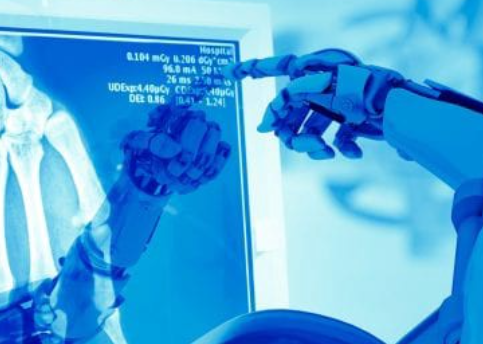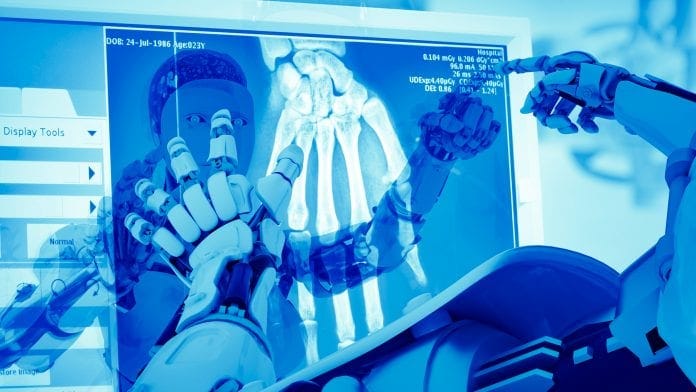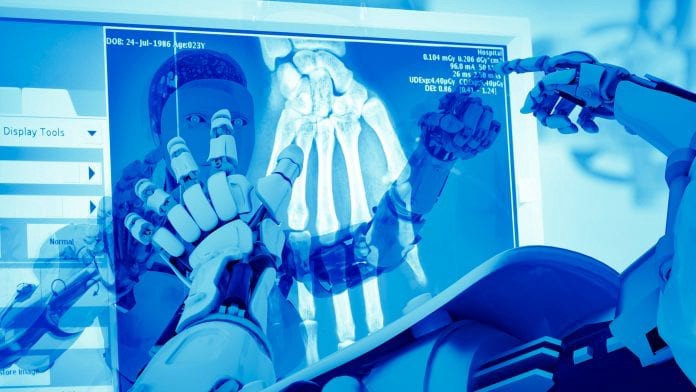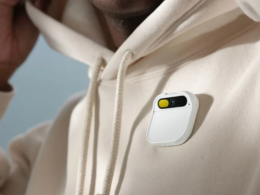Abdulmajeed Bin Dahmash, MD, 1 Mohammed Alabdulkareem, MD,2 Aljabriyah Alfutais, MD,3 Ahmed M Kamel, MSc,4 Feras Alkholaiwi, MD,1 Shaker Alshehri, MD,3 Yousof Al Zahrani, MD, FRCR,3 and Mohammed Almoaiqel, MD, FRCPC3
December 11, 2020.
healtheuropa
Key messages
by Joaquim Cardoso MSc.
Chief Editor of The Digital Health Strategy Blog
February 24, 2022
A cross-sectional multicenter survey of medical students in Saudi Arabia was conducted in April 2019, with 476 respondents
The worry that AI might displace radiologists in the future had a negative influence on medical students’ consideration of radiology as a career.
- Only 31% believed that AI would replace radiologists in their lifetime,
- while 44.8% believed that AI would minimize the number of radiologists needed in the future.
- 58.8% were anxious about the uncertain impact of AI on radiology.
Academic radiologists are encouraged to educate their students about AI and its potential impact when students are considering radiology as a lifetime career choice.

ABSTRACT
Objective:
- To test medical students’ perceptions of the impact of artificial intelligence (AI) on radiology
- and the influence of these perceptions on their choice of radiology as a lifetime career.
Methods:
- A cross-sectional multicenter survey of medical students in Saudi Arabia was conducted in April 2019.
Results:
- Of the 476 respondents, 34 considered radiology their first specialty choice, 26 considered it their second choice, and 65 considered it their third choice.
- Only 31% believed that AI would replace radiologists in their lifetime,
- while 44.8% believed that AI would minimize the number of radiologists needed in the future.
- Approximately 50% believed they had a good understanding of AI; however, when knowledge of AI was tested using five questions, on average, only 22% of the questions were answered correctly.
- Among the respondents who ranked radiology as their first choice, 58.8% were anxious about the uncertain impact of AI on radiology.
- The number of respondents who ranked radiology as one of their top three choices increased by 14 when AI was not a consideration.
- Radiology conferences and the opinions of radiologists had the most influence on the respondents’ preferences for radiology.
Conclusion:
The worry that AI might displace radiologists in the future had a negative influence on medical students’ consideration of radiology as a career.
Academic radiologists are encouraged to educate their students about AI and its potential impact when students are considering radiology as a lifetime career choice.
Advances in knowledge:
Rapid advances of AI in radiology will certainly impact the specialty, the concern of AI impact on radiology had negative influence in our participants and investing in AI education and is highly recommended.
Only 31% believed that AI would replace radiologists in their lifetime,
while 44.8% believed that AI would minimize the number of radiologists needed in the future.
58.8% were anxious about the uncertain impact of AI on radiology.
ORIGINAL PUBLICATION (excerpted version)

Artificial intelligence in radiology: does it impact medical students preference for radiology as their future career?
Abdulmajeed Bin Dahmash, MD, 1 Mohammed Alabdulkareem, MD,2 Aljabriyah Alfutais, MD,3 Ahmed M Kamel, MSc,4 Feras Alkholaiwi, MD,1 Shaker Alshehri, MD,3 Yousof Al Zahrani, MD, FRCR,3 and Mohammed Almoaiqel, MD, FRCPC3
December 11, 2020.
The introduction below is an excerpt of the full version of the original publication.
Introduction
Over the past decade, artificial intelligence (AI) and machine learning (ML) have become some of the most highly discussed topics in radiology, with about 800 related publications in 2017 alone.
AI is a scientific field of computer skills that can function similar to a human being intelligence in learning ability and problem-solving skills, the more images radiology residents see, the more he/she learn, and the same applies to ML and deep learning (DL), ML is a branch of AI in which an algorithm allows computers to continuously advance based on data without manual programming, and it is the most commonly used type of AI in radiology.
Rapid advances in the field of radiology will certainly change the practice of radiologists, as routine tasks can be performed faster and more efficiently with the aid of AI.
However, parts of radiologists’ jobs can be complicated for AI, such as resolving complicated clinical cases.
One paper from the European Society of Radiology indicated that AI will not replace radiologists; in fact, it will improve radiology and increase radiologists’ value and importance.
However, radiologists need to educate themselves on AI and work with AI researchers to ensure that AI is used in the best way possible to provide benefit to patients.
Similarly, other healthcare specialties will be also impacted by AI such as pathology, dermatology, ophthalmology, cardiology and others.
Radiology is an appealing specialty to many medical students for various reasons, including the lifestyle of diagnostic radiology and diverse sub-specialty options for diagnostic and interventional radiology.
In Saudi Arabia, radiologists make $210,000 on average annually in private practice with an average of 0.04 radiologists per 1000 citizens, Canada has the highest estimated average income for radiologists with $700,000 annually and an average of 0.07 radiologists per 1000 citizens.
In addition, radiologists in the USA make $427,000 annually on average, about $170,000 more than other specialties, like pediatrics, internal medicine, and family medicine. Interest in radiology in the USA increased from 1990 on, reaching its peak in 2009, when 7% of senior medical students in the USA applied for radiology residency positions. Since then, the interest in radiology has been declining.
To the authors knowledge, there are no published statistics in Saudi Arabia for the number of applications to radiology to measure if the interest in radiology has increased or declined for the past years.
In Abduljabbar et al study in Saudi Arabia on factors influencing medical students on their choice for radiology as a career, it is demonstrated that high salary, fewer working hours and job flexibility were the main reasons to choose radiology among their respondents, however, no direct patient contact and use of growing technology were the main reasons for not choosing radiology.
In 2016, Geoffrey Hinton, a famous computer scientist, said “we should stop training radiologists now; it is just completely obvious deep learning is going to do better than radiologists”.
This statement attracted attention in the general media, among radiologists, and in scientific radiology journals.
Misunderstanding about the effect of AI on radiology may discourage medical students from considering radiology as a specialty.
Previous studies in the same subject from Canada, Germany, UK, and Brazil concluded that AI played a negative role in medical students’ choice for radiology.
Medical students need to understand AI and its implications in the field of radiology in order to make a rational decision about radiology as a future career.
The aim of this study is to assess medical students’ perception of AI in radiology and the impact of these perceptions on their choice regarding radiology as a career.
References
See the original publication
About the authors & affiliations
Abdulmajeed Bin Dahmash, MD, 1 Mohammed Alabdulkareem, MD,2 Aljabriyah Alfutais, MD,3 Ahmed M Kamel, MSc,4 Feras Alkholaiwi, MD,1 Shaker Alshehri, MD,3 Yousof Al Zahrani, MD, FRCR,3 and Mohammed Almoaiqel, MD, FRCPC3
1 College of Medicine, Imam Mohammad ibn Saud Islamic University, Riyadh, Saudi Arabia,
2 Neuroradiology Division, Department of Medical Imaging, King Abdulaziz Medical City & King Abdullah Specialized Children’s Hospital, Ministry of National Guard-Health Affairs, Riyadh, Saudi Arabia,
3 Vascular and Interventional Radiology Unit, Department of Medical Imaging, King Abdulaziz Medical City & King Abdullah Specialized Children’s Hospital, Ministry of National Guard-Health Affairs, Riyadh, Saudi Arabia,
4 Department of Clinical Pharmacy, Faculty of Pharmacy, Cairo University, Cairo, Egypt,
Originally published at https://www.ncbi.nlm.nih.gov.












